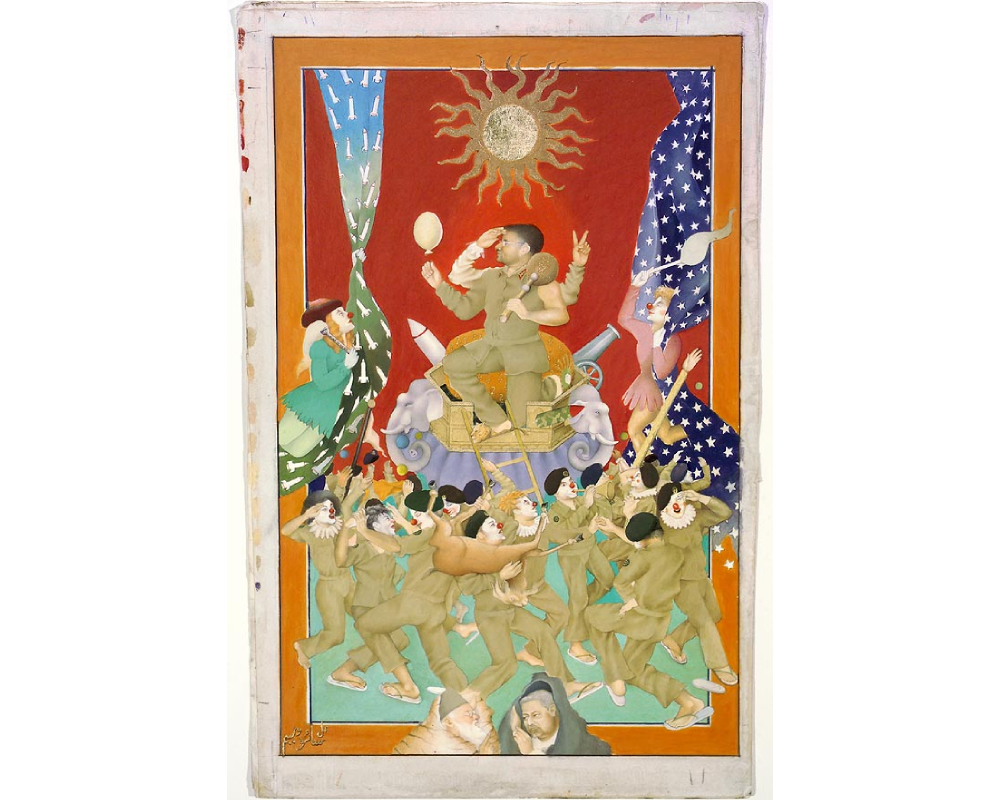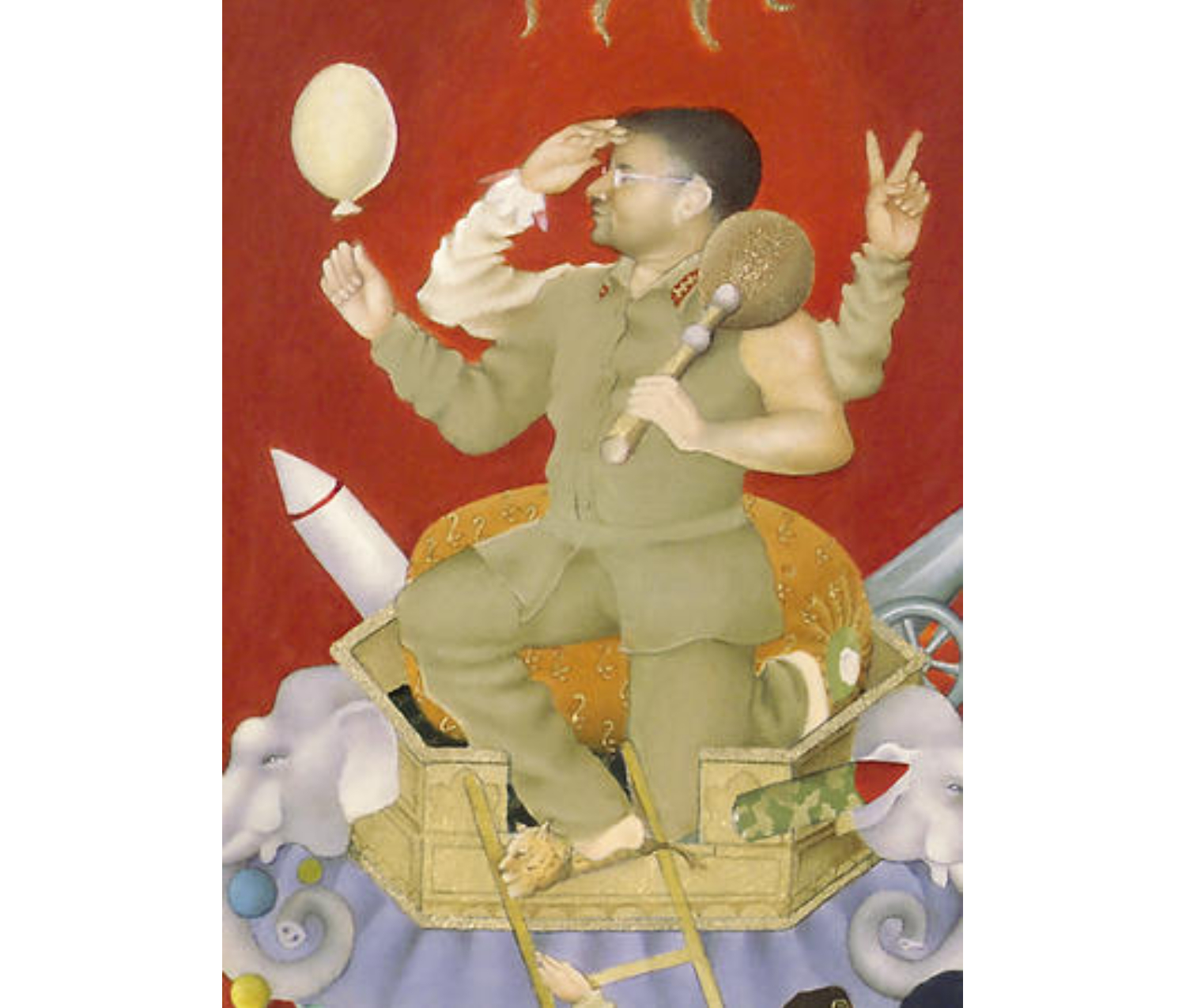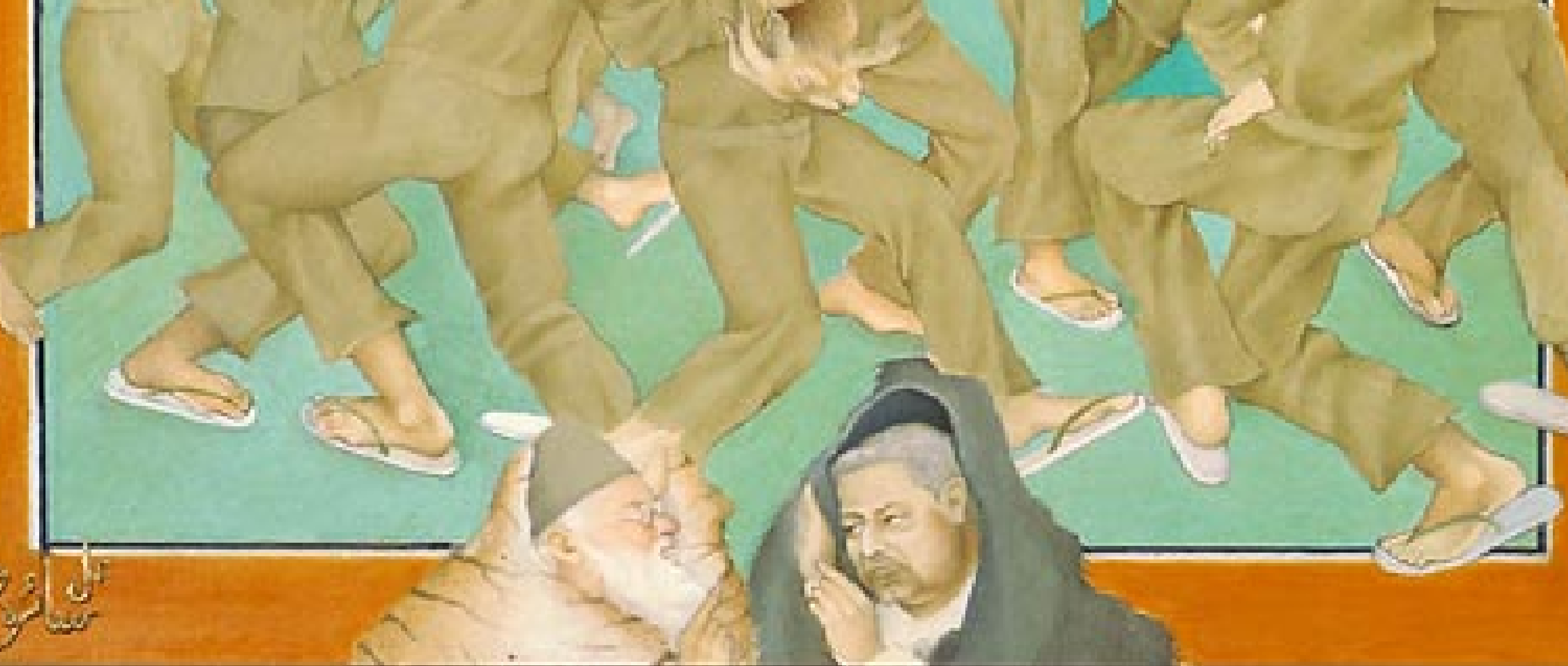
Buzkashi from the series Musharraff
Guest blogger Azania Toure is a Smith College student, class of 2016, majoring in Art History. She wrote this post for Islamic Art and Architecture, a course which surveys the architecture, landscape, book arts and luxury objects produced in Islamic contexts from Spain to India, and from the seventh through the twentieth centuries. The Fall 2014 session was taught by Professor Alex Dika Seggerman, the Five College Post-Doc in Islamic Art & Architecture.
Buzkashi from the series Musharraf is a contemporary Mughal-styled miniature painting by Pakistani artist, Saira Wasim. An integration of Persian and Indian influences, its crowded composition resonates with early Mughal ruler portraits and painting traditions.
The main figure depicted in the center of the piece is former President Pervez Musharraf, who ruled during the nuclear proliferation age from 2001–2007. In the drawing, he becomes a representative of the Hindu god, Shiva, who is known as the destroyer, a source of good and evil, and the balancer of universes. Similar to the Hindu deity, Pervez is illustrated with four arms. Wasim’s satirical interpretation serves to debunk Pervez’s presidential power and allegiance to Pakistan.

Detail of Pervez Musharraf
In side profile, Pervez’s “Shiva-like” depiction intentionally looks to the West as a way to reference his loyalty and biases towards the Western world. Nicknamed the “Cowboy”, Pervez easily aligned himself with Western forces post 9/11 attacks, which sought to “scape-goat” Pakistani citizens such as scientist Abdul Qadeer Khan (shown conspiring at the bottom of the page) for nuclear weapons development. As he gazes to the west, his dedication to America and disloyalty to his nation becomes solidified. Thus, his raised hand salutes the west, while his back faces the proverbial East (Pakistan).

Detail of Abdul Qadeer Khan, on right